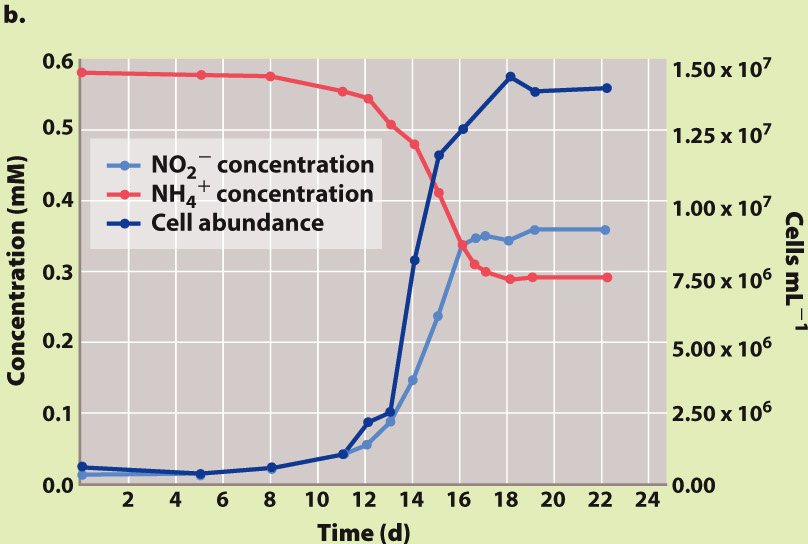Thaumarchaeota may be the most abundant cells in the deep ocean.
Another surprise of environmental sequencing has been the discovery that the immense volumes of ocean beneath the surface waters contain vast numbers of archaeons that have not yet been cultured in the lab. In the deep ocean, these organisms may be nearly as abundant as the combined number of all bacteria on and below the surface. Recently segregated as the Thaumarchaeota, these archaeons are chemoautotrophs, deriving energy from the oxidation of ammonia (Fig. 26.19). Thus, like the discovery of SAR11, the discovery of marine thaumarchaeotes makes it clear that before the still-
HOW DO WE KNOW?
FIG. 26.19
How abundant are archaeons in the oceans?
BACKGROUND Early exploration of microbial diversity in the oceans revealed that archaeons are tremendously abundant. Just how abundant are they, and what metabolisms do they employ to obtain energy and carbon?
METHOD Scientists sampled seawater throughout the depth of the ocean at a test site in the northern Pacific Ocean. To the samples, they added molecular tags bound to fluorescent molecules that are visible under the microscope. The tags were RNA sequences that bind to small-
RESULTS By counting the cells marked by different fluorescent tags in seawater samples, the biologists showed that bacteria dominate microbial communities in near-

CONCLUSION Marine thaumarchaeota, unknown in 1990, are now known to be among the most abundant organisms in the oceans.
FOLLOW-

SOURCES Karner, M. B., E. F. DeLong, and D. M. Karl. 2001. “Archaeal Dominance in the Mesopelagic Zone of the Pacific Ocean.” Nature 409:507–